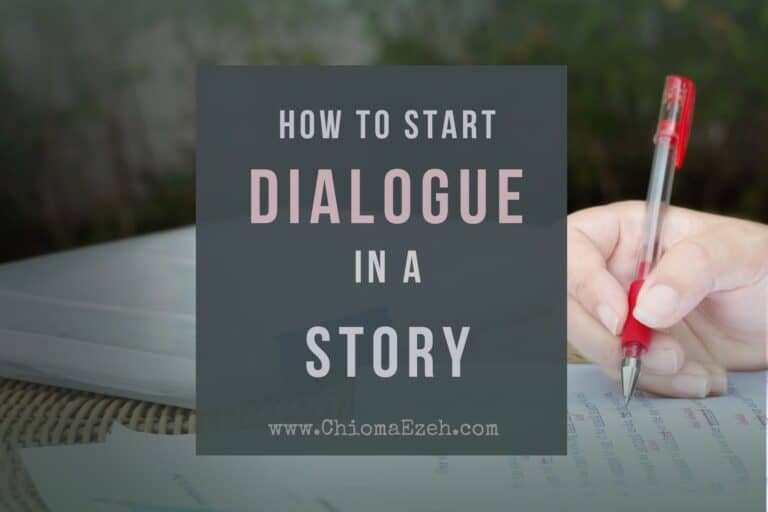How to Write Action Beats: A Simple Guide for Writers
I’ve seen many writers struggle with incorporating action beats into their dialogue. I’m here to share how you can easily write action beats using a new underrated technique.
With these simple, practical tips, you’ll soon be weaving action beats into your dialogue like a pro. So, let’s jump right in and learn how to write action beats.
👉 See our overview guide to dialogue writing for authors

Let’s Talk
Are you a writer aspiring to pen a masterpiece that never fails to captivate? Look no further. Reach out to us and uncover how we can help you to take your writing to unprecedented heights!

How to Write Action Beats Like A Pro
Step 1: Understand the Basics of Action Beats
Before we dive into the step-by-step process, it’s crucial to grasp the fundamental concept of action beats.
As a refresher, action beats briefly describe a character’s physical action, emotion, or thought that accompanies their dialogue. They enhance the atmosphere, reveal character traits, and maintain a good pace in your writing.
Step 2: Identify Opportunities for Action Beats
As you write or revise your dialogue-heavy scenes, identify opportunities where action beats would benefit you. Look for moments where you can:
- Show emotions or thoughts: Replace instances of “telling” a character’s feelings or thoughts with action beats that “show” them instead.
- Break up dialogue: Intersperse action beats to add variety and prevent long stretches of dialogue from becoming monotonous.
- Control pacing: Use action beats to speed up or slow down the pace of your dialogue, depending on the scene’s needs.
Step 3: Choose Fitting Actions
When selecting actions for your action beats, consider the following tips:
- Be specific: Use clear, concise descriptions to help your reader visualize the character’s actions, emotions, or thoughts.
- Stay true to the character: Ensure the actions you choose align with the character’s personality, background, and current emotional state.
- Avoid clichés: Steer clear of overused actions, like sighing or rolling eyes, which can make your writing feel stale and unoriginal.

Step 4: Write Your Action Beats
Now that you’ve identified opportunities and chosen effective actions, it’s time to write your action beats. Keep the following guidelines in mind as you write:
- Connect the action beat to the dialogue: Ensure the action beat logically flows with the dialogue, providing context or enhancing the conversation.
- Vary sentence structure: Mix up the sentence structure of your action beats to maintain a natural, dynamic flow in your dialogue.
- Use appropriate language: Choose language and sentence structure that matches the tone and style of your story.
Example:
Without action beats:
“I can’t believe you did that,” she said.
“It was a mistake,” he replied.
With action beats:
“I can’t believe you did that,” she said, shaking her head in disbelief.
“It was a mistake,” he replied, looking down and clenching his fists.
Step 5: Balance Dialogue and Action Beats
When incorporating action beats into your writing, it’s essential to balance dialogue and action beats. Too many action beats can slow the pace and become distracting, while too few may leave your dialogue flat.
As you practice, you’ll develop a feel for the right balance that works best for your unique writing style.
Step 6: Revise and Polish Your Action Beats
After you’ve inserted action beats into your dialogue, take the time to revise and polish them. Ensure that each action beat:
- Is relevant: Confirm that each action beat is relevant to the scene and the characters involved, avoiding any beats that feel out of place or confusing.
- Doesn’t interrupt the flow: Make sure your action beats don’t disrupt the flow of the dialogue or create confusion for the reader.
- Adds value: Each action beat should add value to the scene, whether by revealing character traits, enhancing the atmosphere, or contributing to the pacing.
Once you’ve revised your action beats, you can seek feedback from other writers, beta readers, or writing groups. Their insights can help you identify areas for improvement and refine your action beats further.
Be open to constructive criticism and continue to practice, as mastering action beats takes time and persistence.
Step 7: Apply Your Skills to Various Scenes & Genres
As you become more comfortable writing action beats, challenge yourself by applying your skills to different scenes and genres. This will enhance your versatility as a writer and allow you to discover new techniques for creating engaging and dynamic action beats.
Examples of Action Beats in Various Genres:
Romance:
He reached for her hand, his fingers gently intertwining with hers. “I’ve missed you,” he whispered, his voice full of longing.
Mystery:
She narrowed her eyes, studying the suspect’s every move. “Tell me again, where were you on the night of the murder?” she asked, her tone demanding.
Science Fiction:
He gazed at the alien landscape, his eyes wide with wonder. “It’s incredible,” he breathed, the awe evident in his voice.
Step-By-Step Action Beats Template For Writers
To help you master this skill, I’ve developed a practical step-by-step template that will guide you through writing action beats. I formulated the PEACR acronym which stands for:
- P – Purpose
- E – Emotion
- A – Action
- C – Connection
- R – Refine
With this template and the examples provided, you can write action beats with ease and confidence.
- Identify the PURPOSE: [Determine what you want to achieve with the action beat]. This include:
- revealing emotion
- breaking up dialogue
- controlling pacing
- enhancing atmosphere
- Pinpoint the EMOTION: [Identify the character’s emotion or thought you want to convey through the action beat]. This may be:
- happiness
- anger
- confusion
- curiosity, etc.
- Choose a fitting ACTION: [Select a fitting action that accurately represents your identified emotion or thought]. This may be:
- physical action
- facial expression, or
- inner thought
- CONNECT the action to the dialogue: [Now, connect the action to the dialogue.] Ensure that the action beat:
- logically flows with the dialogue
- provides context for the scene
- enhances the conversation.
- REFINE and polish: Revise the action beat. Make sure it is:
- specific
- varied, and
- relevant to the scene and characters.

Examples of Using the Action Beats Template
Example 1:
Dialogue: “I don’t know what to do,” he muttered.
Step 1: Purpose: Reveal emotion
Step 2: Emotion: Frustration and uncertainty
Step 3: Action: Running his fingers through his hair
Step 4: Connected Dialogue + Action beats: “I don’t know what to do,” he muttered, running his fingers through his hair in frustration.
Step 5: Refine and Polish: “I don’t know what to do,” he muttered, flattering his fingers through his hair.
Example 2:
Dialogue: “I can’t believe you did that,” she said.
Purpose: Reveal emotion
Emotion: Disbelief and disappointment
Action: Shaking her head
Connected Dialogue + Action beat: “I can’t believe you did that,” she said, shaking her head in disappointment.
Refine and Polish: “I can’t believe you did that,” she said, shaking her head.
Example 3:
Dialogue: “This place is amazing!” he exclaimed.
Purpose: Enhance atmosphere
Emotion: Excitement and awe
Action: Spreading his arms wide
Connected Dialogue + Action beat: “This place is amazing!” he exclaimed, spreading his arms wide in awe.
Refine and Polish: “This place is amazing!” he exclaimed, spreading his arms wide.
Example 4:
Dialogue: “Please, don’t go,” she whispered.
Purpose: Control pacing
Emotion: Sadness and desperation
Action: Holding his hand
Connected Dialogue + Action beats: “Please,” she whispered, holding his hand tightly, “don’t go.”
Refine and Polish: “Please,” she whispered, holding his hand tightly, “don’t go.”
FAQs On How To Write Action Beats
How Can I Effectively Incorporate Action Beats Into My Dialogue Writing?
To effectively incorporate action beats, use specific descriptions of the character’s actions, emotions, or thoughts; vary your action beats by mixing up physical and emotional reactions with inner thoughts. Additionally, use action beats to speed up or slow down the pace of your dialogue, depending on the scene.
Can I Overuse Action Beats In My Writing?
Yes, overusing action beats can slow down the pace and become distracting. Finding the right balance between dialogue and action beats is essential to keep your writing engaging and maintain a natural flow.
Should I Use Action Beats In Every Dialogue Exchange?
While action beats can enhance dialogue, they don’t need to be used in every exchange. Use them strategically to create a natural flow, reveal character traits, and maintain pacing. Overusing action beats can make your writing feel cluttered and slow the pace.
Final Notes: How to Write Action Beats
Writing action beats is essential for any fiction writer looking to create engaging, dynamic dialogue. By following this step-by-step guide and template, you’ll be well on your way to incorporating action beats that effectively reveal character traits, control pacing, and enhance the atmosphere of your scenes.
Remember to identify the purpose, pinpoint the emotion or thought, choose a fitting action, connect the action to the dialogue, and refine and polish your action beats. With practice and consistency, you’ll find that your characters become more relatable and your scenes more vivid.

![Examples of Settings in Books [15 Popular Stories Dissected]](https://chiomaezeh.com/wp-content/uploads/2023/02/examples-of-settings-in-books-1-768x512.jpg)


![What Is Second Person Point Of View? [Definition & Examples]](https://chiomaezeh.com/wp-content/uploads/2023/03/second-person-point-of-view-1-768x512.jpg)

